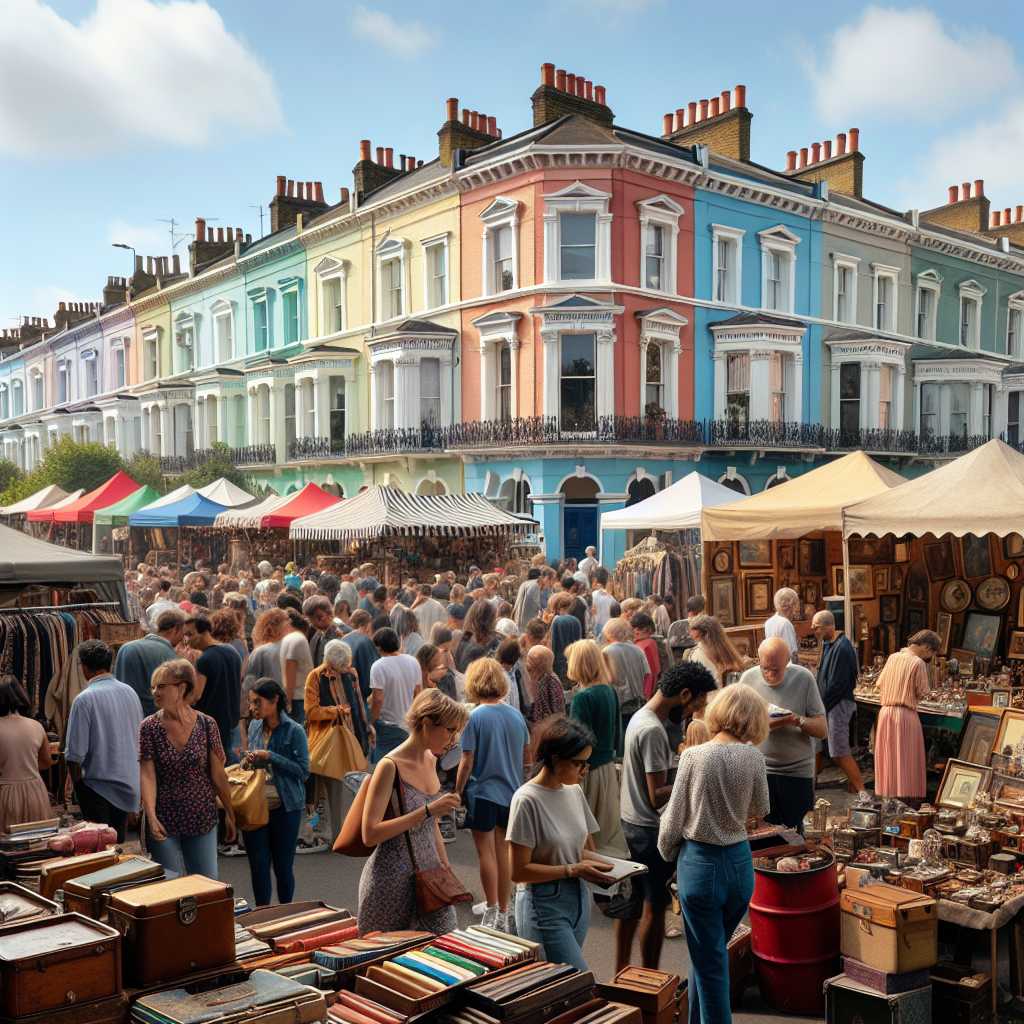The Vibrant Cultural Tapestry of Notting Hill: A Comprehensive Exploration
One of London’s most iconic and vibrant areas, Notting Hill is a dazzling blend of rich history, diverse cultural influences, charming architecture, and a world-renowned annual carnival. In this detailed exploration, we will delve into the past, present, and festivities that comprise the essence of Notting Hill, understanding how it has evolved from a modest rural area into a celebrated destination within the United Kingdom.
Histories and Chronicles: The Story of Notting Hill
Notting Hill has not always been the progressive hotspot it is today. Its lineage can be traced back to the Saxon era when it consisted mainly of farmland. Major development surged in the Victorian era when elegant squares and terraces were constructed alongside a booming cultural scene. However, Notting Hill blundered into urban decay following World War II which set the stage for an influx of immigrants in subsequent years.
Crucially, these waves of immigration from various parts of the Colonial Empire brought about a flourishing of numerous cultures and ethnicities that would drastically reshape the cultural outlook of the area. It was through their resilience that these communities helped pave the way for Notting Hill’s rejuvenation.
Architectural Elegance Amidst Urban Culture
Notting Hill is also renowned for its distinctive Victorian-era architecture; terraced houses painted in various colors make for picturesque streets that tourists and locals alike find enchanting. Portobello Road cuts through the heart of Notting Hill and features market stalls selling antiques, vintage clothes, and eclectic crafts that manifest the neighborhood’s keen eye for artistry and creativity.
Portobello Road Market: A Marvelous Cornucopia
A part of Notting Hill that deserves singular focus is the Portobello Road Market. This market has operated since the 1800s, metamorphosing from a fresh-food market to an antiques treasure-trove gathering renowned vendors and collectors. It has become a cultural symbol, offering insight into local London life and global novelties with various sections operating on different days catering to unique shopping experiences.
Notting Hill Carnival: Culture in Celebration
The most breathtaking aspect of local culture is undoubtedly the annual Notting Hill Carnival; tracing its roots to Caribbean festivals, it began in the 1960s when local Trinidadian residents started celebrating their music and dance as a way to ease racial tensions. Every August Bank Holiday weekend, the streets come alive with roadside calypso music, striking costumes, and an atmosphere of unity reflecting Notting Hill’s sense of diversity and inclusion.
The Contribution of Notting Hill to London’s Film and Media Scene
Notting Hill’s unique urban charm has captured the hearts of film directors for years. The 1999 romantic comedy ‘Notting Hill’, starring Julia Roberts and Hugh Grant, ambassadorized its quaint lifestyle and multicultural dynamism on a global level. Emphasizing how important locations become characters in storytelling techniques further brings tourists searching for those illustrious cinematic moments.
Gentrification: A Double-Edged Sword Outside Looking In
As desirable as Notting Hill has become, it is vital to mention the continuous changes as economic forces sway its demographic; gentrification brings higher property prices forcing original residents to leave while simultaneously rejuvenating infrastructure and increasing safety. This double-edged sword invites necessary debate around community cohesion and balanced growth.
The Foodiverse of Notting Hill: A Global Melting Pot
A stroll down Notting Hill’s streets serves as an unofficial gastronomical tour: exclusive restaurants representing global cuisine narrate how multiculturalism flavors day-to-day life. Artisanal bakeries or innovative fusion restaurants give credence to London’s reputation as one of the most expandable food capitals of the world.
Notes
In conclusion, Notting Hill is more than just another London neighborhood; it’s a microcosm that epitomizes cultural integration within an urban setting filled with historical richness—all while demonstrating endurance through changing socio-economic tides.
*Image description*: A bustling scene from Portobello Road Market in Notting Hill showcasing colorful antique stalls with shoppers milling around under sunny skies with the famous pastel-colored terraced houses seen in the background.
